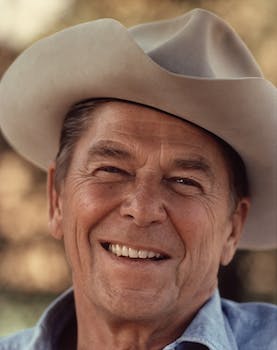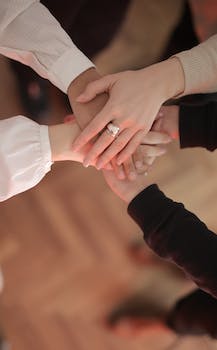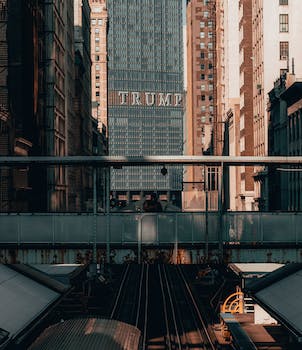

-
Table of Contents
Unveiling the dark shadows: The Age of Hatred in the United States — Part I
Introduction
The Age of Hatred in the United States — Part I is an exploration of the growing divisions and animosity within American society. This article delves into the factors contributing to this age of hatred, examining the political, social, and cultural dynamics that have fueled the rise of hostility and polarization in the country. By shedding light on these issues, Part I aims to provide a comprehensive understanding of the current state of affairs in the United States.
The Rise of Extremism: Understanding the Factors Behind the Growing Hatred in America
The United States has long prided itself on being a beacon of freedom and tolerance. However, in recent years, there has been a disturbing rise in hatred and extremism across the country. This article aims to delve into the factors behind this growing trend, focusing on the rise of extremism in America.
One of the key factors contributing to the rise of extremism is the increasing polarization of American society. Over the past few decades, political and social divisions have deepened, creating an "us versus them" mentality. This polarization has been fueled by the rise of social media and the echo chambers it creates, where individuals are exposed only to ideas that align with their own beliefs. This has led to a lack of understanding and empathy for those with differing viewpoints, further exacerbating the divide.
Another factor that has contributed to the rise of extremism is economic inequality. The gap between the rich and the poor in America has widened significantly, leading to feelings of resentment and frustration among those who feel left behind. Extremist groups often exploit these feelings of economic insecurity, offering simplistic solutions and scapegoating marginalized communities as the cause of their problems. This economic anxiety, combined with a sense of powerlessness, can push individuals towards extremist ideologies.
The decline of trust in institutions is also a significant factor in the rise of extremism. Many Americans have lost faith in traditional institutions such as the government, media, and even religious organizations. This erosion of trust has created a void that extremist groups are all too eager to fill. They offer a sense of belonging and purpose to those who feel disillusioned and disconnected from mainstream society.
Furthermore, the increasing influence of conspiracy theories has played a role in the rise of extremism. With the advent of the internet, misinformation and conspiracy theories can spread rapidly, reaching a wide audience. These theories often prey on people's fears and insecurities, providing them with a distorted worldview that justifies their hatred and extremist beliefs. The proliferation of conspiracy theories has made it easier for extremist ideologies to gain traction and recruit new members.
Lastly, the rise of extremist rhetoric in mainstream politics has contributed to the normalization of hatred in America. Politicians who engage in divisive and inflammatory rhetoric can embolden extremist groups and validate their beliefs. This normalization of hatred not only fuels the rise of extremism but also creates a toxic political climate that further divides the nation.
In conclusion, the rise of extremism in America can be attributed to a combination of factors. The increasing polarization of society, economic inequality, declining trust in institutions, the influence of conspiracy theories, and the normalization of hatred in politics all play a role in fueling this disturbing trend. Understanding these factors is crucial in addressing the issue and working towards a more tolerant and inclusive society. In Part II of this series, we will explore the consequences of this growing hatred and extremism in the United States.
The Role of Social Media in Fueling Hatred and Division in the United States

The Age of Hatred in the United States — Part I
The Role of Social Media in Fueling Hatred and Division in the United States
In recent years, the United States has witnessed a disturbing rise in hatred and division. From racially motivated attacks to political polarization, it seems that the country is becoming increasingly fragmented. While there are undoubtedly multiple factors contributing to this troubling trend, one cannot ignore the significant role that social media plays in fueling hatred and division.
Social media platforms have become an integral part of our daily lives. They provide us with a means to connect with others, share our thoughts and opinions, and stay informed about current events. However, the very features that make social media so appealing also make it a breeding ground for hatred and division.
One of the main reasons social media fuels hatred is the anonymity it offers. People can hide behind a screen name and spew hateful comments without fear of consequences. This anonymity emboldens individuals to express their most extreme views, often leading to heated arguments and personal attacks. The lack of face-to-face interaction further dehumanizes others, making it easier to disregard their feelings and perspectives.
Moreover, social media algorithms contribute to the echo chamber effect, where users are exposed to content that aligns with their existing beliefs and biases. This creates an environment where individuals are constantly reaffirmed in their opinions, leading to a reinforcement of extreme views and a lack of empathy towards those who hold different perspectives. As a result, social media becomes an echo chamber of hatred, where like-minded individuals amplify each other's animosity towards those who disagree.
Another factor that exacerbates hatred on social media is the rapid spread of misinformation. False information can easily go viral, reaching millions of people within minutes. This misinformation often targets specific groups, fueling existing prejudices and stereotypes. The lack of fact-checking and critical thinking on social media platforms allows falsehoods to spread like wildfire, further deepening divisions and animosity.
Furthermore, social media platforms have become a breeding ground for hate groups and extremist ideologies. These groups use social media to recruit new members, spread their hateful ideologies, and organize real-world events. The anonymity and reach of social media make it easier for hate groups to find like-minded individuals and amplify their message, leading to an increase in hate crimes and acts of violence.
The impact of social media on political polarization cannot be overlooked either. Political discourse has become increasingly toxic, with individuals on opposite ends of the political spectrum demonizing each other. Social media platforms have become battlegrounds for political debates, where insults and personal attacks have replaced reasoned arguments. This toxic environment not only hinders productive dialogue but also deepens the divide between political factions.
In conclusion, social media plays a significant role in fueling hatred and division in the United States. The anonymity it offers, the echo chamber effect, the spread of misinformation, the presence of hate groups, and the toxic political discourse all contribute to the growing animosity within the country. While social media has undoubtedly brought many positive changes to society, it is crucial to recognize and address its negative impact on our collective well-being. In Part II of this series, we will explore the role of media sensationalism in perpetuating hatred and division in the United States.
The Impact of Political Polarization on the Age of Hatred in America
The United States has long prided itself on being a beacon of democracy and freedom. However, in recent years, there has been a disturbing rise in hatred and division within the country. This article will explore the impact of political polarization on the age of hatred in America.
Political polarization refers to the increasing ideological divide between the two major political parties in the United States. This divide has become more pronounced in recent years, with Republicans and Democrats holding increasingly divergent views on a wide range of issues. This polarization has created an environment where compromise and cooperation are seen as signs of weakness, leading to a toxic political climate.
One of the key consequences of political polarization is the erosion of trust in institutions and the media. As people become more entrenched in their political beliefs, they are less likely to trust information that contradicts their worldview. This has led to the rise of alternative media sources that cater to specific ideological biases, further deepening the divide between Americans.
The impact of political polarization is not limited to the realm of politics. It has also seeped into everyday life, affecting personal relationships and social interactions. Families and friends find themselves on opposite sides of the political spectrum, leading to strained relationships and even estrangement. This has created a sense of isolation and loneliness for many individuals, as they feel unable to connect with those who hold different beliefs.
The age of social media has exacerbated the impact of political polarization. Platforms like Facebook and Twitter have become echo chambers, where people are surrounded by like-minded individuals and rarely exposed to opposing viewpoints. This has created a breeding ground for hatred and intolerance, as people feel emboldened to express their most extreme views without fear of consequence.
The rise of hate groups and extremist ideologies is another consequence of political polarization. When people feel marginalized or ignored by mainstream politics, they may turn to more radical ideologies as a way to express their frustrations. This has led to an increase in hate crimes and acts of violence, as individuals feel justified in targeting those they perceive as enemies.
The impact of political polarization on the age of hatred in America cannot be overstated. It has created a toxic political climate, eroded trust in institutions, strained personal relationships, and fueled the rise of hate groups. If left unchecked, this trend threatens to further divide the country and undermine the very foundations of democracy.
In Part II of this series, we will explore the role of political leaders and media in perpetuating the age of hatred in America. It is crucial that we understand the factors contributing to this divisive climate in order to find ways to bridge the divide and foster a more inclusive and tolerant society. Only by addressing the root causes of political polarization can we hope to overcome the age of hatred in the United States.
Q&A
1. What is the Age of Hatred in the United States?
The Age of Hatred refers to a period characterized by increased polarization, division, and animosity among different groups within the United States.
2. What factors have contributed to the Age of Hatred in the United States?
Several factors have contributed to the Age of Hatred, including political polarization, social media echo chambers, economic disparities, racial tensions, and the erosion of trust in institutions.
3. What are the consequences of the Age of Hatred in the United States?
The consequences of the Age of Hatred include a decline in civil discourse, increased violence and hate crimes, decreased social cohesion, and a hindered ability to address pressing societal issues.
Conclusion
In conclusion, The Age of Hatred in the United States — Part I sheds light on the growing polarization and division within the country. It highlights the rise of hate crimes, extremist ideologies, and the erosion of civil discourse. The article emphasizes the urgent need for unity, empathy, and constructive dialogue to address these issues and foster a more inclusive and tolerant society.












